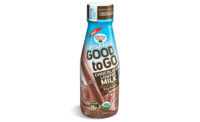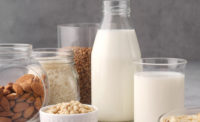
As of Jan.1, sesame became the ninth food ingredient, as well as milk, required to be labeled as an allergen on packaged foods and dietary supplements. Milk allergies affect an estimated 6 million individuals in the United States, is most common in children, and is often resolved in early childhood. In contrast, most children can readily digest lactose, and various degrees of lactose maldigestion or lactose intolerance can develop with age.
Individuals with a true milk protein allergy should avoid dairy; but for those with difficulty digesting lactose, there is an ever-increasing range of lactose-free dairy options available. Newer research indicates that some individuals may have sensitivity to the A1 beta casein molecule, and a variety of a2 milk products are coming into the market.
A2 milk
Some individuals may assume that they have issues digesting lactose, but in fact, they may be sensitive to the A1 beta casein protein. Milk protein consists of whey and casein fractions. Casein can be further broken down into alpha, beta, and kappa fractions; and the beta fraction comes primarily in either A1 or A2 forms. In the U.S., approximately 30% of all cows are A2/A2, 30% are A1/A1, and 40% are a blend of the two types.
“Because of a slight difference in the amino acid chain, some individuals may be able to more readily digest milk with just the A2 fraction,” said Blake Waltrip, CEO of a2 Milk, North America. The a2 Milk Co. genetically tests cows to identify a clean supply chain, and works with farms to grow A2 herds.
a2 milk is available across all dairy breeds. a2 milk products are available in whole, 2%, half and half, Hershey’s chocolate, and grass-fed options.
The 2022 review, “Does a Little Difference Make a Big Difference? Bovine β-Casein A1 and A2 Variants and Human Health-An Update,” notes that some “clinical studies on humans showed a negative effect of variant A1 on serum glutathione level, digestive well-being, cognitive performance score in children, and mood score in women.” The authors note that more scientific proof is required to determine the actual effects of milk variants on consumer health.
Milk protein allergy
There are some bits of good news for those who suffer from a true milk protein allergy. For infants diagnosed with cow’s milk allergy who can’t have breastmilk, the Global Allergy and Asthma European Network Task Force suggests a documented hypoallergenic extensively hydrolyzed cow’s milk formula, or an amino-acid based formula. The group also suggests offering oral immunotherapy under specialist supervision using food products to selected children (aged 4-plus years) with clinically diagnosed persistent severe IgE mediated cow’s milk allergy to increase the amount of allergen tolerated while on therapy.
Most milk-allergic children can tolerate milk in baked form, according to the 2016 study titled “Baked Milk and Egg Diets for Milk and Egg Allergy Management.” Including baked milk and eggs not only improves the nutrition of these children, the study indicates that this inclusion may accelerate the resolution of milk reactivity. Physician-supervised introduction of baked milk is recommended.
Lactose sensitivity
In 2022, 37% of consumers globablly reported some lactose sensitivity or intolerance, according to FMCG Gurus. For these individuals, there are a wide range of dairy products that are lactose free or very low in lactose due to the addition of lactase enzyme, action of live cultures in yogurt, natural maturation of cheese, or use of ultrafiltered dairy protein ingredients.
A few newer examples, gleaned from the berryondairy.com website and my local supermarkets include: Good Culture probiotic milk, Organic Valley creamers, Clover organic whole milk, Ehrmann high-protein pudding, Beckon ice cream snack cups, Re:THINK ice cream (also made with A2/A2 milk), Briette flavored brie-style cheese, Barebells high-protein milkshakes, Chobani zero-sugar yogurt, Danone Two Good smoothies, Alexandre Family Farm A2/A2 yogurt, and fairlife ultrafiltered yogurt.
The National Dairy Council reports, “Consuming smaller amounts of dairy foods throughout the day and with other foods can help individuals with Lactose Intolerance (LI) tolerate as much as 12 grams of lactose at a time, which is about the amount of lactose in one cup of milk.”
Dietitians are working to dispel misconceptions about dairy sensitivities, including that dairy can cause inflammation. “While it’s true that dairy will cause inflammation if you’re allergic to it —just like any food or drink would if you have an allergy or strong intolerance —EatingWell dietitians are firm believers that dairy can definitely be part of a healthy diet.”
While self-reported rates of allergy to cow’s milk can be as high as one in 20, only one in 50 U.S. consumers have a physician-confirmed allergy to cow’s milk. That means that possibly as many as 98%, of U.S. adults can — and should — consume the goodness of dairy.
Sharon Gerdes is a Certified Food Scientist and author who writes extensively about dairy’s role in Health and Wellness. Learn more at http://sharongerdes.com.




